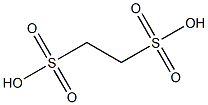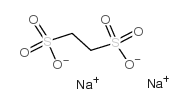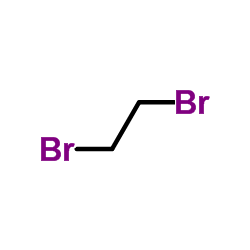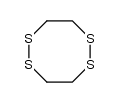1,2-乙烷二磺酸二水合物, 98%,1,2-Ethanedisulfonic Acid Dihydrate
产品编号:西域试剂-WR373473| CAS NO:110-04-3| MDL NO:MFCD00069901| 分子式:HO3SCH2CH2SO3H xH2O| 分子量:190.2
本网站销售的所有产品仅用于工业应用或者科学研究等非医疗目的,不可用于人类或动物的临床诊断或者治疗,非药用,非食用,
| 英文名称 | 1,2-Ethanedisulfonic Acid Dihydrate |
|---|---|
| CAS编号 | 110-04-3 |
| 产品熔点 | 109 °C |
| 产品密度 | 1.928g/cm3 |
| 精确质量 | 189.96100 |
| PSA | 125.50000 |
| LogP | 0.92360 |
| 外观性状 | 灰白色至灰色-米色晶体和粉末 |
| 溶解性 | soluble |
| 稳定性 | 具有腐蚀刺激性,皮肤接触会产生过敏反应,操作人员应穿戴防护用具。 |
相关文档
化学品安全说明书(MSDS)
下载MSDS质检证书(COA)
相关产品
| 危害码 (欧洲) | C:Corrosive; |
|---|---|
| 风险声明 (欧洲) | R34 |
| 安全声明 (欧洲) | S26-S36/37/39-S45-S27 |
| 危险品运输编码 | 2585 |
| 包装等级 | II |
| 危险类别 | 8 |
| 海关编码 | 2904100000 |
|
Section I.Chemical Product and Company Identification Chemical Name 1,2-Ethanedisulfonic Acid, Dihydrate Portland OR Synonym1,2-Ethanedisulfonic acid (CA INDEX) C2H6O6S2. 2H2O Chemical Formula 110-04-3
CAS Number Section II.Composition and Information on Ingredients Toxicology Data Chemical NameCAS Number Percent (%)TLV/PEL 1,2-Ethanedisulfonic Acid, Dihydrate110-04-3Min. 95.0 (T) Not available.Not available. Section III. Hazards Identification Acute Health EffectsCorrosive to eyes and skin. The amount of tissue damage depends on length of contact. Eye contact can result in corneal damage or blindness. Skin contact can produce inflammation and blistering. Inhalation of dust will produce irritation to gastro-intestinal or respiratory tract, characterized by burning, sneezing and coughing. Severe over-exposure can produce lung damage, choking, unconsciousness or death. Harmful if ingested or inhaled. Minimize exposure to this material. Severe overexposure can result in injury or death. Follow safe industrial hygiene practices and always wear proper protective equipment when handling this compound. Chronic Health EffectsCARCINOGENIC EFFECTS : Not available. MUTAGENIC EFFECTS : Not available. TERATOGENIC EFFECTS : Not available. DEVELOPMENTAL TOXICITY: Not available. Repeated exposure of the eyes to a low level of dust can produce eye irritation. Repeated skin exposure can produce local skin destruction, or dermatitis. Repeated inhalation of dust can produce varying degree of respiratory irritation or lung damage. Section IV.First Aid Measures Check for and remove any contact lenses. In case of contact, immediately flush eyes with plenty of water for at least 15 Eye Contact minutes. Get medical attention. In case of contact, immediately flush skin with plenty of water. Remove contaminated clothing and shoes. Wash clothing Skin Contact before reuse. Thoroughly clean shoes before reuse. Get medical attention. If the victim is not breathing, perform mouth-to-mouth resuscitation. Loosen tight clothing such as a collar, tie, belt or Inhalation waistband. If breathing is difficult, oxygen can be administered. Seek medical attention if respiration problems do not improve. IngestionDO NOT INDUCE VOMITING. Loosen tight clothing such as a collar, tie, belt or waistband. If the victim is not breathing, perform mouth-to-mouth resuscitation. Examine the lips and mouth to ascertain whether the tissues are damaged, a possible indication that the toxic material was ingested; the absence of such signs, however, is not conclusive. Section V.Fire and Explosion Data Not available. May be combustible at high temperature.Auto-Ignition Flammability Flash PointsFlammable LimitsNot available. Not available. These products are toxic carbon oxides (CO, CO2), sulfur oxides (SO2, SO3...). Combustion Products Fire Hazards Not available. Risks of explosion of the product in presence of mechanical impact: Not available. Explosion Hazards Risks of explosion of the product in presence of static discharge: Not available. Fire Fighting Media SMALL FIRE: Use DRY chemical powder. LARGE FIRE: Use water spray, fog or foam. DO NOT use water jet. and Instructions Consult with local fire authorities before attempting large scale fire-fighting operations. Continued on Next Page 1,2-Ethanedisulfonic Acid, Dihydrate Section VI.Accidental Release Measures Spill CleanupCorrosive material. Harmful material. Hygroscopic material. Stop leak if without risk. DO NOT get water inside container. DO NOT touch spilled material. Use water spray to reduce Instructions vapors. Prevent entry into sewers, basements or confined areas; dike if needed. Eliminate all sources of ignition. Consult federal, state, and/or local authorities for assistance on disposal. Section VII. Handling and Storage CORROSIVE. HARMFUL. HYGROSCOPIC. Keep container dry. Keep away from heat. Mechanical exhaust required. Handling and Storage When not in use, tightly seal the container and store in a dry, cool place. Avoid excessive heat and light. Do not breathe Information dust. Never add water to this product. Wear suitable protective clothing. If you feel unwell, seek medical attention and show the label when possible. Treat symptomatically and supportively. Always store away from incompatible compounds such as oxidizing agents, alkalis (bases), moisture. Section VIII. Exposure Controls/Personal Protection Use process enclosures, local exhaust ventilation, or other engineering controls to keep airborne levels below recommended Engineering Controls exposure limits. If user operations generate dust, fume or mist, use ventilation to keep exposure to airborne contaminants below the exposure limit. Personal ProtectionSplash goggles. Lab coat. Dust respirator. Gloves. A MSHA/NIOSH approved respirator must be used to avoid inhalation of the product. Suggested protective clothing might not be sufficient; consult a specialist BEFORE handling this product. Exposure LimitsNot available. Section IX. Physical and Chemical Properties Solid. (Light grey~yellowish-greySolubility Physical state @ 20°CVery soluble in: Dioxane. Soluble in: crystalline powder and small granularEthanol, Ether, Water. solid) Not available. Specific Gravity 190.2 (Anh) Molecular WeightPartition CoefficientNot available. Boiling PointNot available.Vapor PressureNot applicable. 112°C (233.6°F)Not available. Melting PointVapor Density Refractive IndexNot available.VolatilityNot available. Not available.Not available. Critical TemperatureOdor ViscosityNot available.TasteNot available. Section X.Stability and Reactivity Data This material is stable if stored under proper conditions. (See Section VII for instructions) Stability Conditions of InstabilityAvoid excessive heat and light. Incompatibilities Highly reactive with oxidizing agents, alkalis (bases), moisture. Section XI. Toxicological Information Not available. RTECS Number Routes of ExposureEye Contact. Ingestion. Inhalation. Not available. Toxicity Data Chronic Toxic EffectsCARCINOGENIC EFFECTS : Not available. MUTAGENIC EFFECTS : Not available. TERATOGENIC EFFECTS : Not available. DEVELOPMENTAL TOXICITY: Not available. Repeated exposure of the eyes to a low level of dust can produce eye irritation. Repeated skin exposure can produce local skin destruction, or dermatitis. Repeated inhalation of dust can produce varying degree of respiratory irritation or lung damage. Acute Toxic EffectsCorrosive to eyes and skin. The amount of tissue damage depends on length of contact. Eye contact can result in corneal damage or blindness. Skin contact can produce inflammation and blistering. Inhalation of dust will produce irritation to gastro-intestinal or respiratory tract, characterized by burning, sneezing and coughing. Severe over-exposure can produce lung damage, choking, unconsciousness or death. Harmful if ingested or inhaled. Minimize exposure to this material. Severe overexposure can result in injury or death. Follow safe industrial hygiene practices and always wear proper protective equipment when handling this compound. Continued on Next Page 1,2-Ethanedisulfonic Acid, Dihydrate Section XII.Ecological Information EcotoxicityNot available. Not available. Environmental Fate Section XIII. Disposal Considerations Recycle to process, if possible. Consult your local regional authorities. You may be able to dissolve or mix material with a Waste Disposal combustible solvent and burn in a chemical incinerator equipped with an afterburner and scrubber system. Observe all federal, state and local regulations when disposing of the substance. Section XIV. Transport Information DOT ClassificationDOT Class 8: Corrosive material PIN Number Proper Shipping NameAlkylsulphonic acids, solid III Packing Group (PG) DOT Pictograms Section XV. Other Regulatory Information and Pictograms TSCA Chemical InventoryThis product is NOT on the EPA Toxic Substances Control Act (TSCA) inventory. The following notices are required by 40 CFR 720.36 (C) for those products not on the inventory list: (EPA) (i) These products are supplied solely for use in research and development by or under the supervision of a technically qualified individual as defined in 40 CFR 720.0 et sec. (ii) The health risks of these products have not been fully determined. Any information that is or becomes available will be supplied on an MSDS sheet. WHMIS ClassificationOn DSL. (Canada) EINECS Number (EEC) 203-732-0 EEC Risk StatementsR34- Causes burns. R20/21/22- Harmful by inhalation, in contact with skin and if swallowed. SECTION 16 - ADDITIONAL INFORMATION N/A |
| 上游产品 10 | |
|---|---|
| 下游产品 0 | |


















 浙公网安备 33010802013016号
浙公网安备 33010802013016号